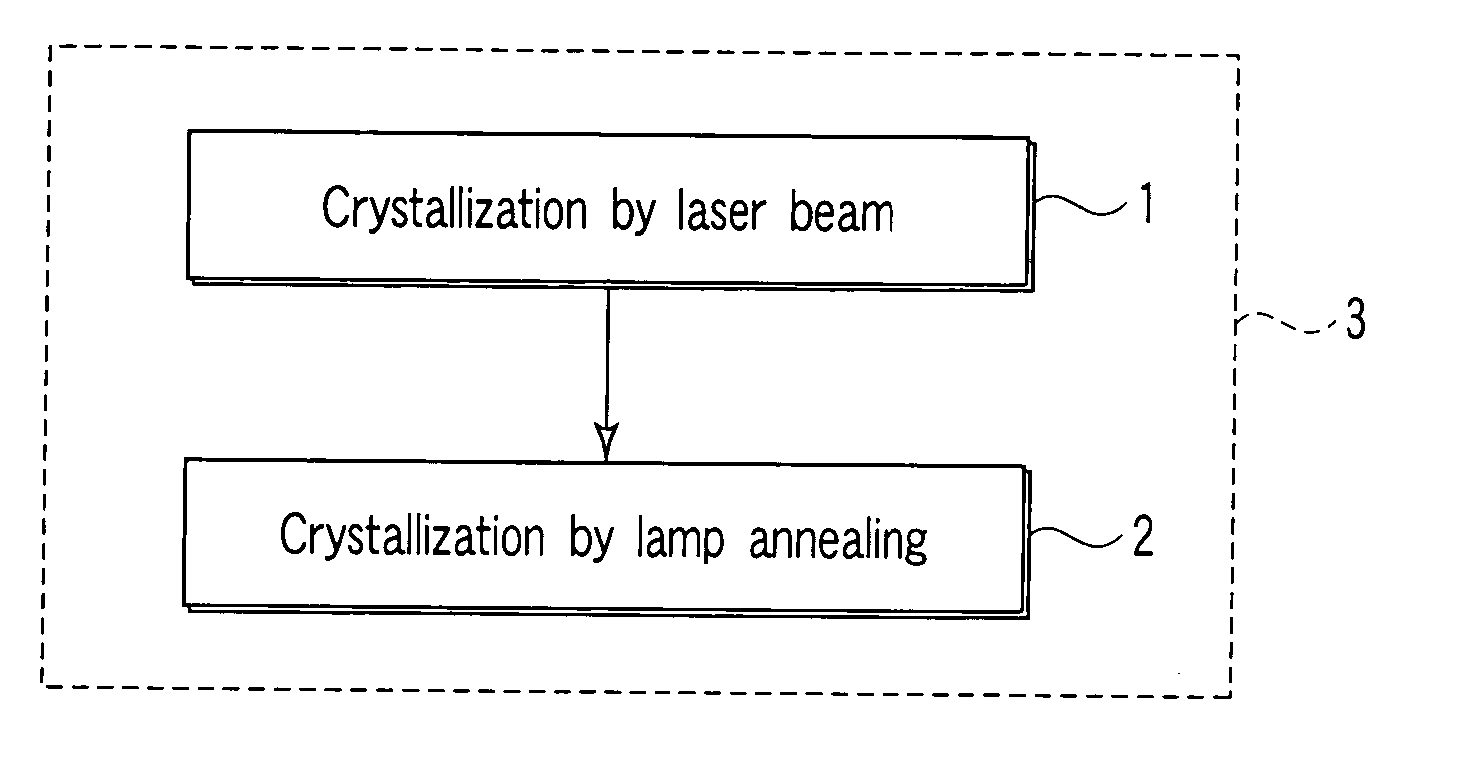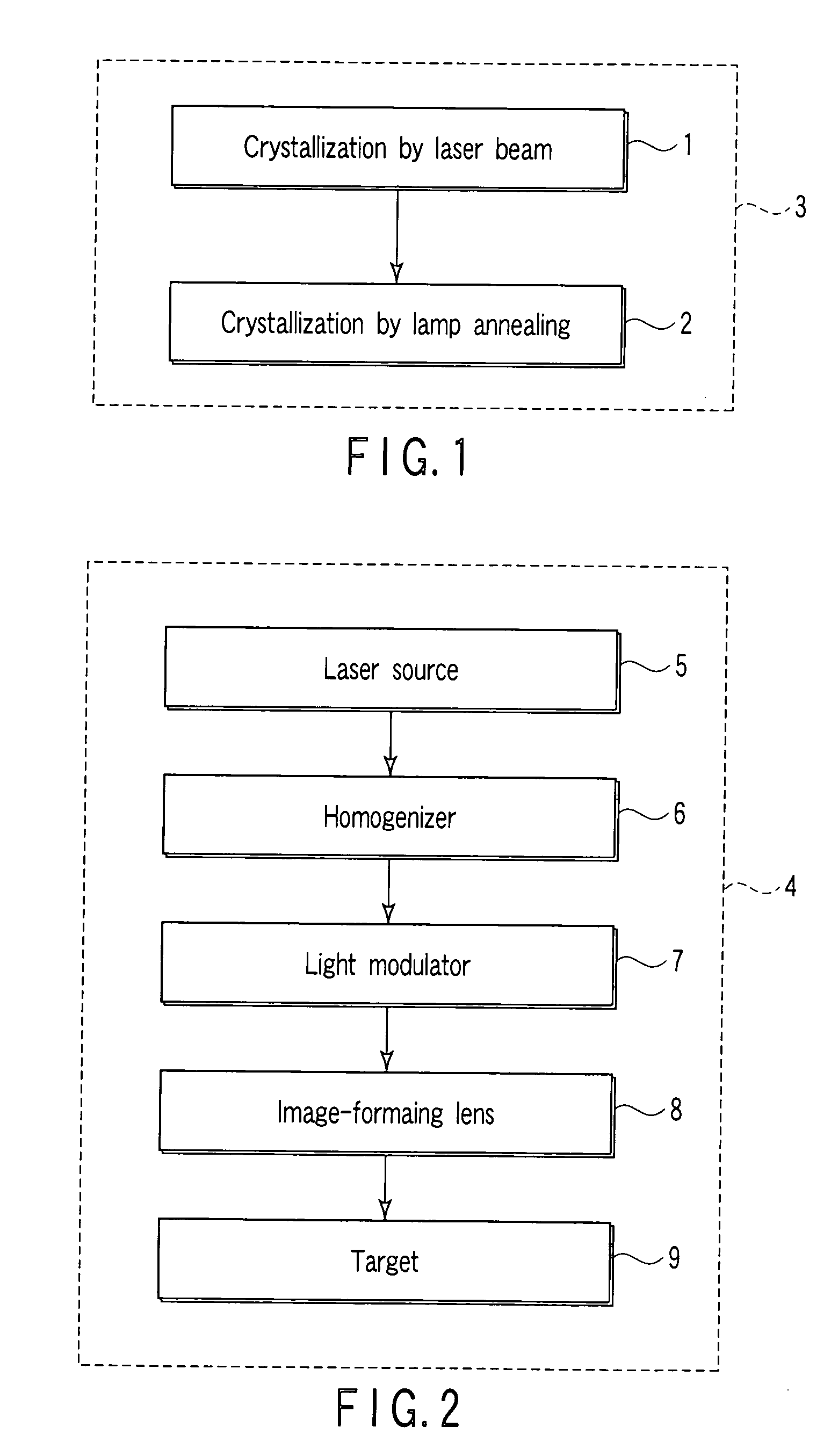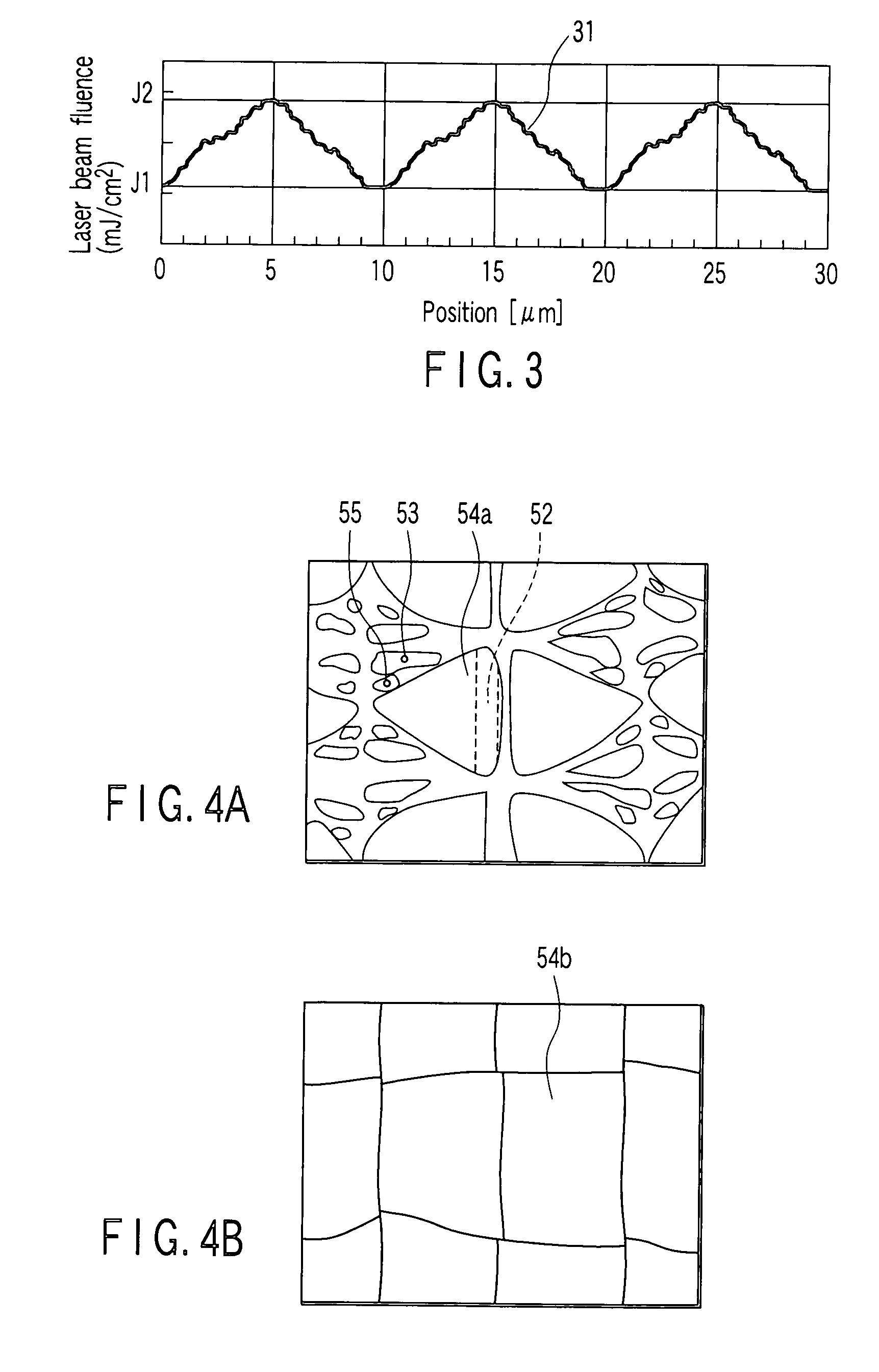Method of manufacturing semiconductor device
a manufacturing method and semiconductor technology, applied in semiconductor/solid-state device manufacturing, basic electric elements, electric devices, etc., can solve the problems of not being able to apply in the field of liquid crystal display, limiting the transistor size, and not being able to meet the requirements of semiconductor size control
- Summary
- Abstract
- Description
- Claims
- Application Information
AI Technical Summary
Benefits of technology
Problems solved by technology
Method used
Image
Examples
second embodiment
[0073] the method of manufacturing a semiconductor device having quadrangular crystallized region array uniformly arranged in plane orientation on an insulating material substrate will be explained by referring to FIGS. 6D to 6F and 8A to 8D, particularly referring to FIGS. 8A to 8D.
[0074] First, an insulating material substrate 91 (for example, quartz glass, soda glass, borosilicate glass, lead glass, fluoride glass, sapphire, plastic, polyimide, etc.), having a side 74, a notch 75 or a marking 76 (may be on front surface or rear surface of the substrate) as shown in FIGS. 6D to 6F, is prepared (FIG. 8A). An insulating layer 92 (for example, film thickness 500 nm) is formed on this insulating material substrate 91. The insulating layer 92 is, for example, a SiO2 film formed by CVD (for example, plasma CVD or low pressure CVD method) or sputtering method. Alternatively, the insulating layer 92 may be a laminated structure of different materials, for example, SiN and SiO2. Further, i...
first embodiment
[0075] Then, as shown in FIG. 8A, on the entire surface of the semiconductor thin film 93, a protective film 94 (for example, SiO2, SiON, SiN, SOG, or their laminated film) is formed to a thickness of about 300 nm. The protective film 94 prevents contamination from the outside, prevents contamination by particles, and also acts to grow larger crystals since the semiconductor thin film is cooled slowly after the heating step by the laser or xenon flash lamps because of the heat accumulation effect brought about by the heat-insulating property of the protective layer When the insulating layer 92 and semiconductor thin film 93 are patterned, the protective film may be formed on the entire surface of the substrate. The subsequent process is substantially the same as in the first embodiment, and is described only briefly below.
[0076] As shown in FIG. 8B, the surface of the protective film 94 is irradiated with laser beam 85 having light intensity distribution as mentioned above. The main...
PUM
 Login to View More
Login to View More Abstract
Description
Claims
Application Information
 Login to View More
Login to View More - R&D
- Intellectual Property
- Life Sciences
- Materials
- Tech Scout
- Unparalleled Data Quality
- Higher Quality Content
- 60% Fewer Hallucinations
Browse by: Latest US Patents, China's latest patents, Technical Efficacy Thesaurus, Application Domain, Technology Topic, Popular Technical Reports.
© 2025 PatSnap. All rights reserved.Legal|Privacy policy|Modern Slavery Act Transparency Statement|Sitemap|About US| Contact US: help@patsnap.com



